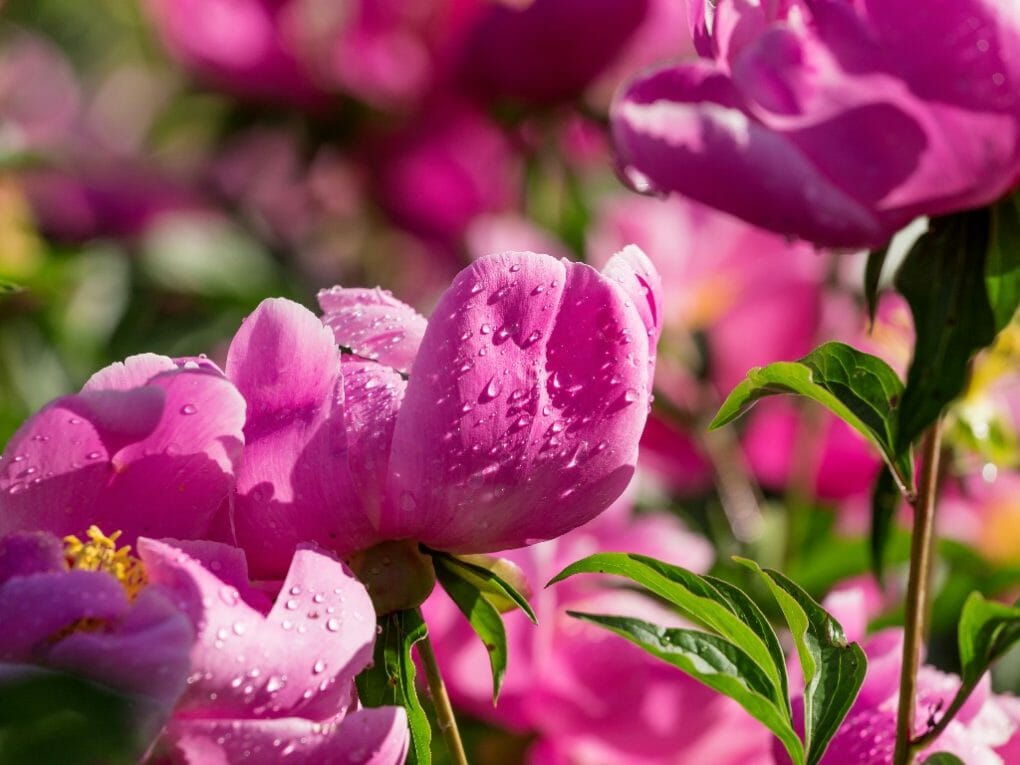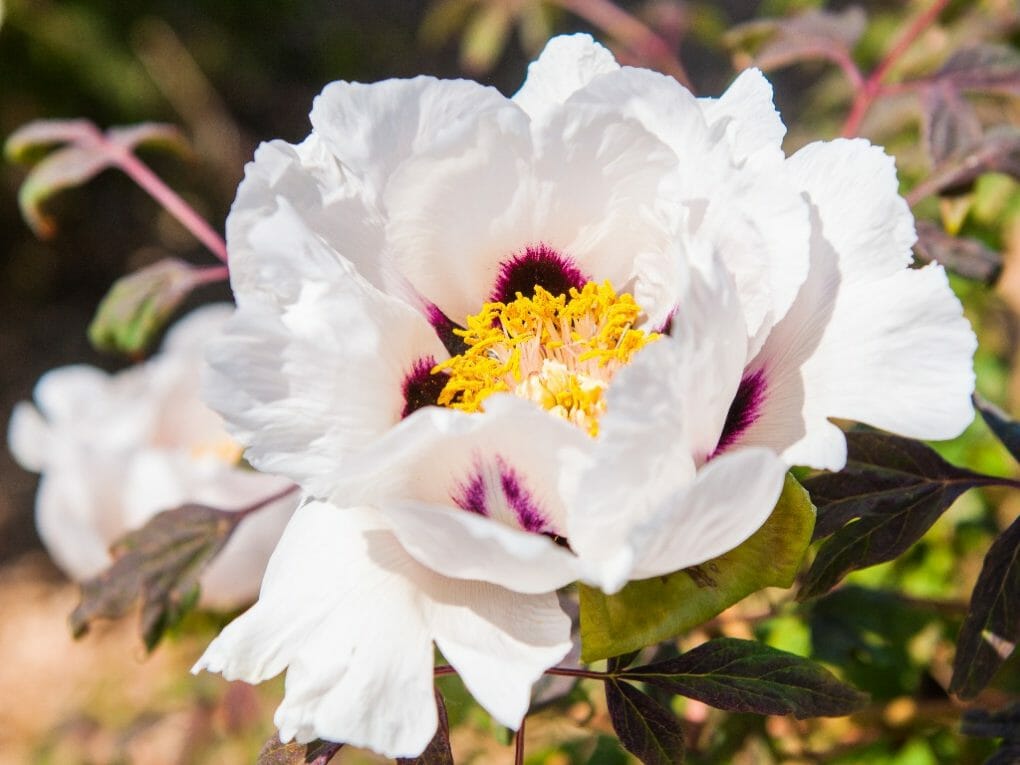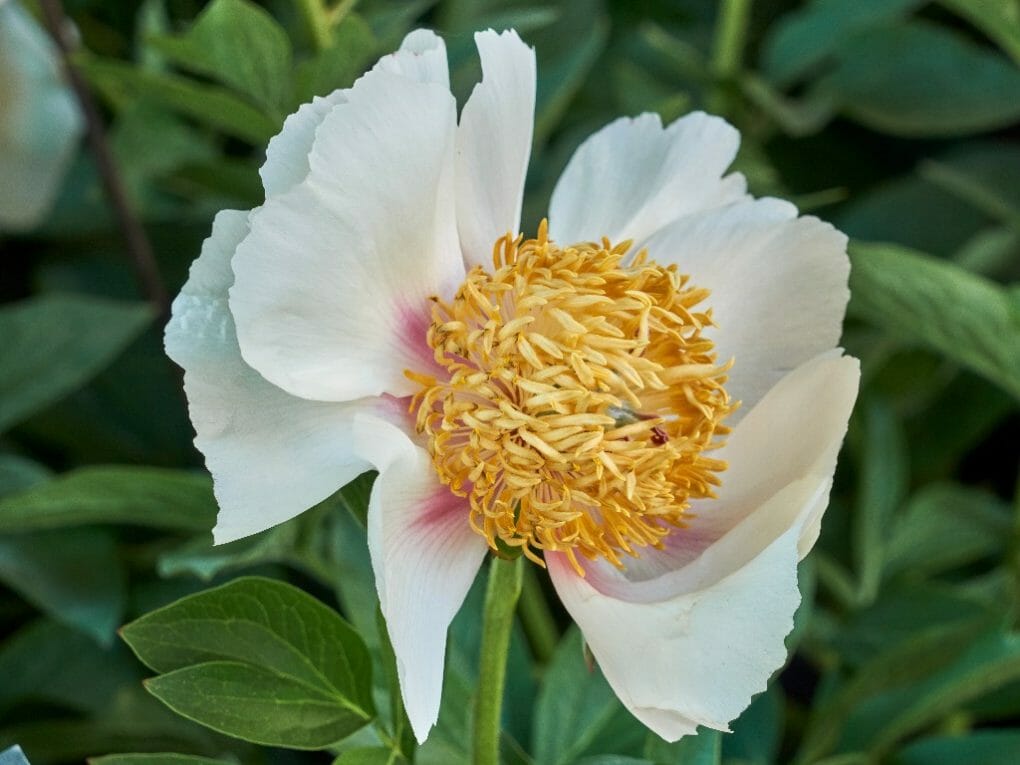Deadhead Peony: The Importance of Deadheading

If you’re thinking of planting a peony this year, there’s one question you need to answer first: should you deadhead? This type of flower is naturally deciduous, which means it will lose its leaves in the fall and winter. When done properly, deadheading will help prolong your peony’s life by preventing it from turning brown and dying. However, there are a few things to consider before you do it. Read on to learn more!
Table of Contents
Should Deadheading Be Done to Peonies?
Peonies need to have their spent flowers removed. Peonies become healthier when their energy is directed toward root development and the maintenance of healthy leaves rather than the production of seeds, thanks to deadheading, which removes spent flowers from the plant.
When your peonies have reached the end of their life cycle and are wilted and drooping, you should consider deadheading them for a few different reasons. Peonies are kept healthy and beautiful by removing the spent flower heads, also known as deadheading. The lower peony plant is wilting and sagging, indicating that it needs to remove its spent flowers.
Plant with Better Health
Peonies benefit from having their spent blooms removed, as this practice is known as deadheading. The production of seed pods by the plant is halted when the spent flowers are removed; as a result, the peony can redirect the energy that would have been used to produce seeds toward the storage of food supplies. This food that has been stored will, in turn, contribute to the energy required for the subsequent year’s flowering and growth.
Avoiding the Spread of Disease
As peony flowers begin to wilt and rot, they are more likely to become infected with fungal diseases such as botrytis. Botrytis fungi can survive the winter because they produce spores, which they develop into as they grow along the base of rotting stalks. If the problem is not addressed, the same spores will form again in the spring, infecting dying blooms and spreading to other plants. As the disease worsens, a gray mold will begin to form. This mold will then spread to other stems and blooms, which may compromise the peony’s overall health.
After you have finished deadheading, it is essential to remove and properly dispose of any spent blooms. Do not put them in the compost because there is a possibility that they are infected with botrytis or another fungal disease.
Longer Blooms
Peonies can be coaxed into blooming for twice as long as they normally would if their spent flowers are removed periodically. More energy can be used to keep healthy blooms longer by removing spent blooms, also known as deadheading. On top of that, different types of peonies that have the potential to produce multiple buds on a single stem have the potential to be coaxed into producing more blooms.
Visual Appeal
Last but not least, one of the most important things you can do to make your peony plants look more appealing to the eye is to deadhead spent and wilted blooms. Wilting flowers often lead to rot, attracting unwelcome insects and creating a peony plant that looks sad and wretched. These peonies have been given excellent care, as evidenced by their present, visually appealing state.
Should You Cut Back Tree Peonies After Flowering?

It is recommended that you do deadhead tree peonies. When compared to deadheading other peonies, tree peonies require a slightly different technique. Tree peonies do not have the delicate green stems that other types do; tree peonies have woody stems that can become quite robust. Wood is susceptible to damage and may even perish during the winter months. In the late spring, use a pruning saw to remove diseased and dead wood from the tree by cutting it away and positioning the cuts above buds facing outward. It is recommended to cut the stems at an angle.
Pests and Diseases That Affect Tree Peonies
Botrytis can also infect tree peonies, although the disease’s effects on them are not as pronounced as on herbaceous peonies. When it comes to tree peonies, the new shoots can suddenly wither and turn brown. The buds can wilt before even opening, and a fuzzy white mold could grow on them. When botrytis is discovered, the affected portion of the fruit should be removed and thrown away as soon as possible.
Tree ponies are also susceptible to rose borer, an insect that can infest the wood, causing it to become riddled with small holes and ultimately causing the branches to wither and die. The adults of the borer insect lay their eggs deep within the wood, and the most obvious sign that these insects are present is the presence of holes in the branches. When this is discovered, the damaged areas must be cut out and thrown away as soon as possible. Remove the diseased portion of the branch by cutting it back several inches.
Gardeners sometimes use a technique that involves dabbing a little glue onto wounds caused by pruning tree peonies. When the glue dries, it will form a barrier that will prevent insects from laying their eggs inside, which will assist in maintaining the health of your tree peonies.
When to Prune
If you have a new tree peony plant, let it take a couple of years to settle in without any attention. After the initial trimming, only deadheading and removing dead wood are necessary. A pruning saw loppers and sharp secateurs are all you need.
In the summer, you should remove spent flowers from flowering stems by deadheading. Leave a few spent blossoms till fall if you wish to harvest seeds.
Like many long-lived shrubs, tree peony can overrun their environment and develop lanky or unproductive old wood. You can bring your plant back to life by cutting it back to size if this is the case.
Tree peonies respond well to severe pruning in the spring, just before new growth appears. However, doing so would entail giving up part of the blossoms from that season. Pruning your shrub in the fall will prevent blossom loss, but you should expect slower growth the following spring.
How To Prune
Tree peonies, scientific name Paeonia suffruticosa, are evergreen bushes that bloom with hundreds of huge, exotic flowers every spring. On the other hand, herbaceous perennial peonies die back to the ground every year and shouldn’t be confused with these.
Tree peonies are stunning and long-lived, although they sometimes need to be deadheaded. The following is a guide for pruning a mature shrub if it becomes too large for its current location or if it develops long, straggly branches that no longer bear fruit.
Pruning Instructions:
You can keep the beauty of your mature tree peony by doing a few straightforward things, including the following:
- Conduct a thorough inspection of the spent blooms. Do any other flower buds appear to be growing on the same stem? You don’t want to sever any connections that could lead to flowers blooming.
- If there are additional buds, all you need to do is snip off the spent flower head. You can avoid having an empty stem sticking out of the plant by following the flower stem into the plant and cutting an inch above the foliage if there are no other buds. This will prevent you from sticking an empty stem out of the plant. If there are other buds, you can follow the flower stem out of the plant.
- Ensure that your shears are clean before using them, as dirty shears can encourage bacteria growth, harming your plant.
- We recommend cutting back any diseased or damaged branches to a healthy node.
- Cut a few of the stems back to fresh buds at soil level or within 15 centimeters of the ground to shape or prune your tree peony.
- If you want your plants to produce fuller canes, trim down their long, skinny stems by a third.
- Cutting back a couple of the oldest stems on a neglected plant to the ground level will give it a new lease on life. Spread this out over a few years to lessen the blow.
- Put the trimmings in the garbage can and dispose of them. Composting them can potentially spread diseases that are harmful to humans.
Are Peonies Capable of Blossoming More Than Once?

Peonies only produce flowers once a year for about seven to ten days. Your peony plant will remain healthy and be ready to bloom once more the following year if you water it regularly, give it proper care, and remove spent flowers when necessary.
Peonies come in wide different varieties, and not all bloom simultaneously. Planting a variety of peonies, each of which blooms at a different time during the season, is a good idea if you want your garden to have a steady stream of flowers blooming throughout the year. Some bloom early in the season, and others bloom later on in the season.
We sincerely hope you found this post both enjoyable and helpful. Peonies need to have their spent flowers removed to maintain their overall health, but the process for doing so is different for tree peonies.
